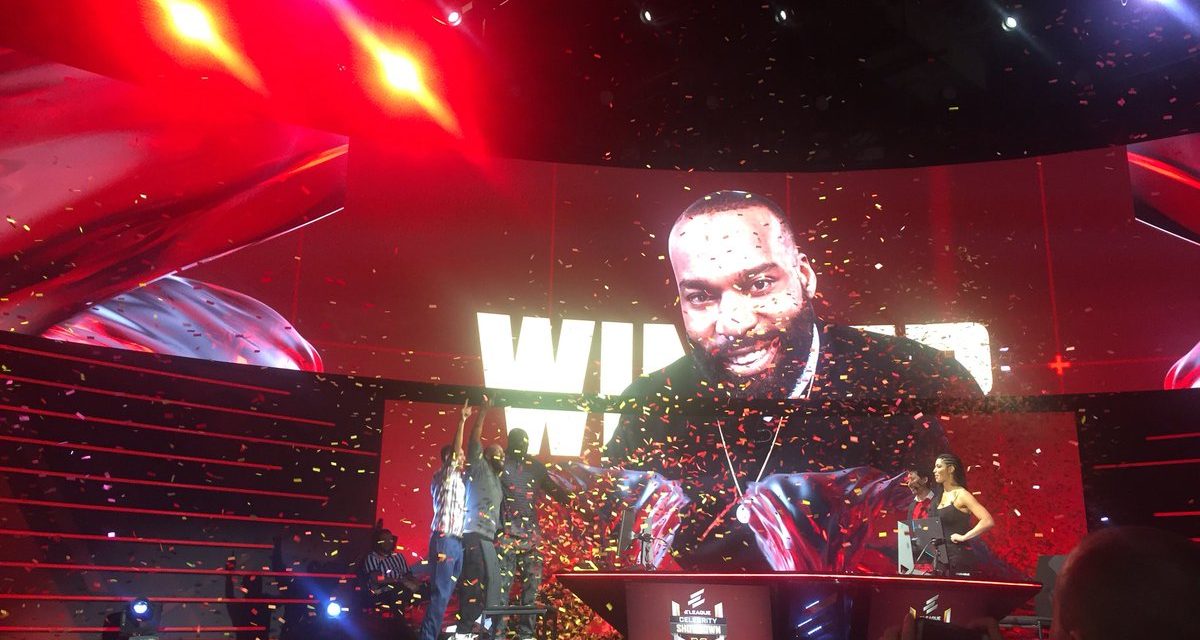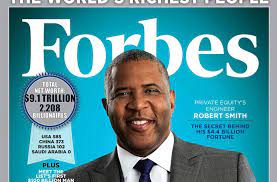CES 2018: These tech transportation startups are using disruption to drive the future
For the past century, many Americans have been accustomed to only the Big 3 — Ford, Chrysler and GM when it comes to homegrown automakers, but in the last few years technology has added new lanes to the highway, so to speak. The new vehicle-manufacturing landscape is not one of scale just yet (Tesla sold more than 76,000 cars in 2016. By comparison, GM sold nearly 10 million), but one of opportunity.
No where is this more evident than in Las Vegas at the global technology show CES, where money expert Clark Howard and team are witnessing first-hand the companies driving innovation.
Meet Olli, the multi-passenger autonomous shuttle
Local Motors, a Phoenix, Arizona-based tech company that focuses on co-creating vehicles through what it calls “low volume manufacturing,” is at CES this week showing off Olli, its self-driving shuttle bus. The company sees Olli as a solution for travel within neighborhoods, college campuses and urban centers.
Unlike the assembly line of yesteryear, Local Motors builds Olli with the help of customers and like-minded innovators, meaning its design is open-source. On its website, the company calls it “an active process where brands and their customers work together with solvers, designers, and engineers to accelerate product and technology development.”
Speaking to Forbes last year, Rogers said what makes his company different is that it listens to what people want and invites them to help turn it into a reality. “It is about changing a 100-year paradigm in mass manufacturing. We are now using the crowd. We are using a bespoke community that we build with suppliers and customers. Then we are changing the way we think about manufacturing.”
The company is touting an accessible Olli, which can help the elderly and those with impairments with their mobile needs. “And with IBM Watson helping with the interactions, it certainly is friendly,” it says on its website.
For more on Olli, check out, Local Motors’ website.
Navya, self-driving courier for the public sector
Also showcasing its wares at CES is Nayva, an international company that specializes in autonomous vehicles.
Geared toward the public sector, Nayva’s Autonom Shuttle has positioned itself as a transportation solution for hospitals and city governments across the South Pacific, Europe, and increasingly, the United States. The French company with offices in the United States hopes the global emphasis on reducing congestion in urban centers will help it integrate into the daily lives of people who are looking for new ways of mobility.
In a deal announced this week, Keolis, an international company that makes transit systems, signed on to bring Nayva’s Autonom Cab, an electric taxi, to the United States. “With the introduction of vehicles such as Navya’s Autonom Cab we hope to kick-start a sea change in the available options for urban mobility in cities across North America and beyond,” Nayva CEO Christophe Sapet said, according to Yahoo News. “Autonomous, personalized and shared, this unique mobility solution answers the major challenges urban populations face traveling in and around cities.”
In addition to self-driving vehicles, Navya makes electric ones, as well. “These are vehicles that merge motor, digital and robotic technology and are capable of solving the problem of the first and last mile, both in cities and on private sites,” says the company’s website.
CES 2018: French Tech Startups Are Taking Over Innovation Exhibit
French startups have growing international ambitions
For the first time at CES, French startups now represent over 30% of all the international companies showcasing at the Eureka Park, far more than Holland (60) or China (55).
“This is a huge jump, more than 50% from last year,” explained Adrien Cabo, in charge of the international development for the French Tech scene. “And for the first time at CES, French startups now represent 1/3 of all the international companies showcased at the Eureka Park, far more than Holland or China combined.”
While you can check out here the list of all the more than 360 French technology startups exhibiting at CES, below are 10 of them that received an innovation award from the Consumer Technology Association (CTA), the organizer of CES 2018:
- Blue Frog Robotics (Best of Innovation Award winner) is the developer of Buddy, the family companion robot that helps people live more easily and safely.
- CamToy developed a Laika, a smart and mobile robot companion for dogs to improve their lonely lives and also change their owners’ lives by giving them the ability to interact with their pet whenever they want.
- Lancey Energy Storage (Best of Innovation Award winner) is the first smart electric heater with a battery and a native energy management system which makes it 50% cheaper to run than any other electric space heaters.
- MyBus is a smart ticketing application for urban public transport that allows users to get rid of physical transport tickets and transport networks their payment terminals.
- Qista has developed a mosquito control solution, the “Anti-Mosquito Trap”, to be used in both private and public spaces.
- Rifft is presenting Wi Surf (Wireless Surface), the first customizable and wireless modular induction charger and power supply station.
- Rium is a low-cost, high-performance and small radioactivity detector that is connected to an easy-to-use mobile application.
- Solable developed LaVie, which transforms tap water into pure mineral water with no consumable or no advanced filtering process.
- Unistellar and Vaonis are makers of telescopes. The former has developed a connected and smart telescope, while the latter has created the world’s most compact one.CES — the official name and former acronym for the Consumer Electronics Show — is an annual trade showorganized by the Consumer Technology Association. Held in January at the Las Vegas Convention Center in Las Vegas,Nevada, United States, the event typically hosts presentations of new products and technologies in the consumer electronics industry. The 2018 show is ongoing.The first CES was held in June 1967 in New York City. It was a spinoff from the Chicago Music Show, which until then had served as the main event for exhibiting consumer electronics. The event had 17,500 attendees and over 100 exhibitors; the kickoff speaker was Motorola chairman Bob Galvin. From 1978 to 1994, CES was held twice each year: once in January in Las Vegas known as Winter Consumer Electronics Show (WCES) and once in June in Chicago, known as Summer Consumer Electronics Show (SCES).The winter show was successfully held in Las Vegas in 1995 as planned. However, since the summer Chicago shows were beginning to lose popularity, the organizers decided to experiment by having the show travel around to different cities starting in 1995 with a planned show in Philadelphia at the Pennsylvania Convention Center. However, the inaugural E3 gaming show was scheduled to be held on the West Coast in May and proved a source of increasing competition, causing the Philadelphia Summer CES show to be cancelled. The 1996 Winter show was again held in Las Vegas in January, followed by a Summer show this time in Orlando, Florida, however only a fraction of the traditional exhibitors participated. Again, the 1997 Winter show in Las Vegas was very successful. The next “Summer” show was scheduled to be held in conjunction with Spring COMDEX in Atlanta, however when only two dozen-or-so exhibitors signed on, the CES portion of the show was cancelled.In 1998, the show changed to a once-a-year format with Las Vegas as the location. In Las Vegas, the show is one of the largest (the other being CONEXPO-CON/AGG), taking up to 18 days to set up, run and break down.
Baron Walter Louis Davis is a former American professional basketball player. He is a two-time NBA All-Star. He was drafted with the third overall pick in the 1999 NBA draft by the Charlotte Hornets. He also played in the NBA for the New Orleans Hornets, Golden State Warriors, Los Angeles Clippers,Cleveland Cavaliers and New York Knicks. Davis played college basketball for UCLA, where he was an All-American honoree before turning professional after his sophomore year. He was a star high school player while at Crossroads School. Davis is the NBA’s all-time leader in steals per game for the playoffs.In 2012, Davis formed the gaming company “5 BALLOONS INTERACTIVE” with Sean O’Brien, formerly of EA Sports, to produce games for the iPhone, iPad, and iPod Touch. Their first game was called “Getting Buckets”.
In 2016, Davis created the Black Santa Company which sells shirts, beanies, onesies, as well as Christmas ornaments among other products.
“I built BIG to function as an educational and empowerment resource for our communities to nurture new opportunities, relationships and careers at the intersection of sports, business, technology, and culture.”
BIG is a global community, welcoming people from all over the world to come together for a deeper understanding of each other’s perspectives and the stories behind those who drive our culture forward. In addition to his NBA career, Davis has had an increasing role in the film industry, with the intention of making it a full-time career when his playing days are over. He is a member of the Screen Actors Guild, having earned membership by appearing in movies such as The Cookout and guest-starring on the ABC Family show Lincoln Heights and ABC’s The Forgotten. He has made appearances both as himself and fictional characters in movies and on television, and has also been involved in producing a number of films, ranging from The Pool Boys to Crips and Bloods: Made in America. Davis and high school friend, Cash Warren, formed a production company called VERSO ENTERTAINMENT in 2005.
Davis appeared on the DVD commentary track of the 2008 film Step Brothers alongside Will Ferrell and John C. Reilly, and appears as himself during season three of Hot In Cleveland. He appeared in the 2012 film That’s My Boy as a gym teacher, and in 2015, he appeared in Yahoo! Screen‘s Sin City Saints, playing the role of Billy Crane. He also played himself in the 2015 film The Night Before, and portrayed a doctor in Joe Dirt 2.
On November 12, 2015, Davis co-starred alongside Kyrie Irving, Ray Allen and J. B. Smoove as Louis in the fourth episode of “Uncle Drew”, a series of Pepsi Max advertisements written and directed by Irving.
On season 3, episode 8 of Mozart in the Jungle, Davis made a special guest appearance as Kevin Majors, an injured NBA player.
Davis will appear in the upcoming Chinese film My Other Home starring Stephon Marbury.













